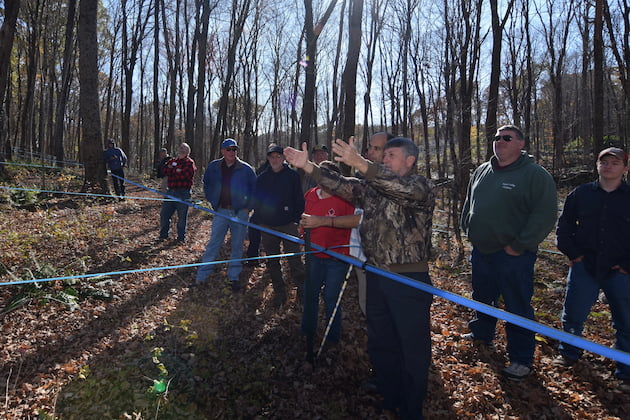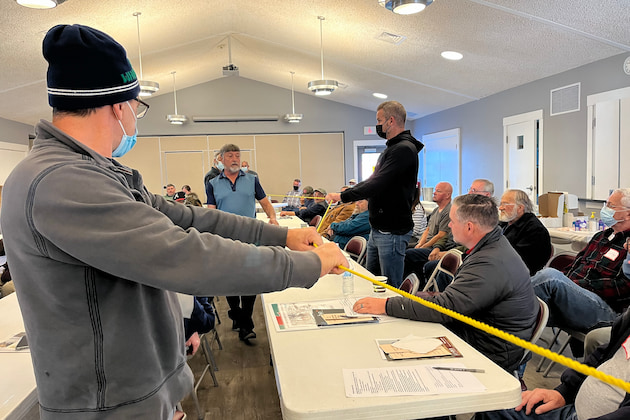Tapping & Tubing
Experts offer pre-season sugarbush tips
'Straight, tight and downhill,' when running laterals
By PETER GREGG | JANUARY 5, 2022
HEBRON, Ct.—Straight, tight and downhill.
That was the simple advice to sugarmakers from retired Leader Evaporator legend Bruce Gillilan.
Gillilan led a tubing demonstration this fall in sugarmaker Ron Wenzel’s spectacular 412-tap bush in Hebron, Ct.
Gillilan said when determining what trees to tie into laterals, outstretch one’s arms up the hill and only connect trees that fall in between.
Other tips? Laterals should only connect between three and five taps per run, he said. Sometimes more if using 3/16ths.
Experts also say to use 36 inch droplines to reach more surface area of the tree, avoiding non-conductive wood.
Never merge two laterals together with a Y fitting, Gillilan said.
When running mainline tubing, he said to make sure to use the proper tools, especially a sight level to determine downhill slope.
“It’s hard to get sap to run uphill,” he joked.
Also for mainline tubing, sugarmakers should be utilizing the all important side ties.
“Wire ties should go every five steps,” he said.
Meanwhile, when trying to determine how many taps to put in each tree, it’s mostly best to use just one, say experts.
Dr. Timothy Perkins of the University of Vermont Proctor Maple Research Center was asked about putting two taps in bigger trees during an online seminar last month.
He wasn’t too keen.
In general a sugarmaker may get a little more sap out of a second hole but for the most part it's cannibalizing from the first, he said.
At the same time that second tap is gobbling up valuable conductive “tapping surface” while only adding a marginal increase in sap, if at all.
Sugarmakers may still be tempted but Perkins advised to think about the sustainability of a sugarmaker’s most important resource.
“Ultimately they’re your trees,” Perkins said.

































